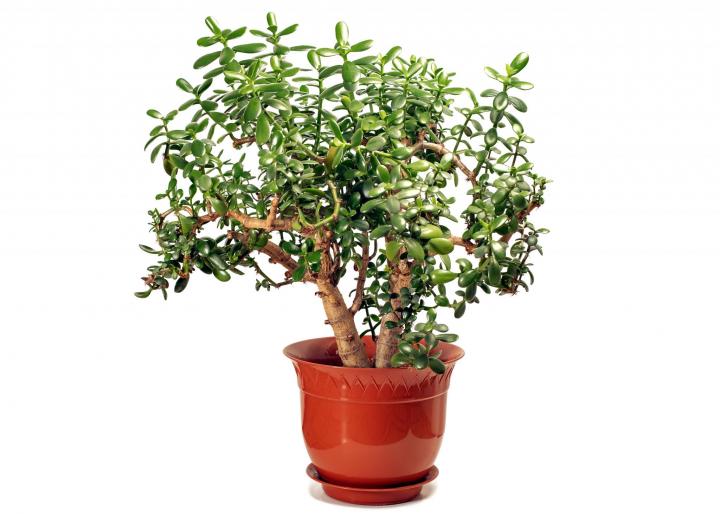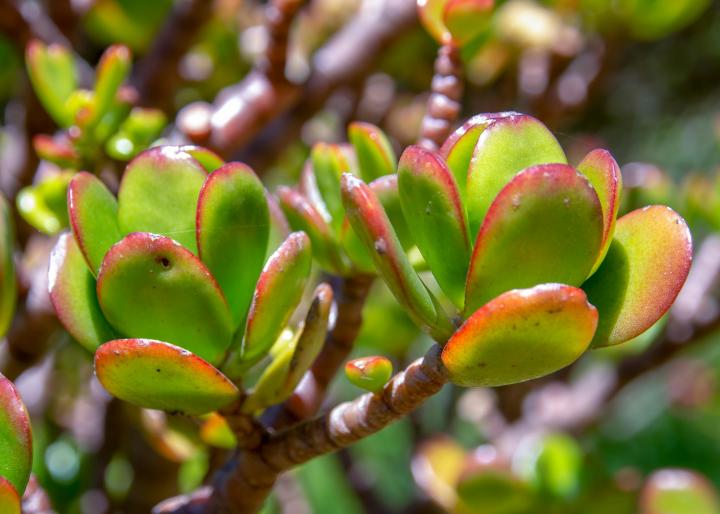
Caption
Jade can make a great houseplant, especially in a classic ceramic or terracotta pot.
Growing Jade Plants: Lighting, Watering, Repotting, Propogation, and Pests
Types
There are many types of jade plants available—from the standard, green-leafed jade to a number of variegated varieties. Here are a few exciting jades to keep an eye out for:
- ‘Hummel’s Sunset’ has beautiful yellow- and red-tipped leaves.
- ‘Tricolor’ has leaves variegated with white and cream.
- ’ET’s Fingers’ has tubular leaves with red tips. An oddity!
Gardening Products
Jade seems to be one of those plants that everybody says is easy to grow...but then doesn't. Leaf drop can occur when the plant is extremely dry OR from frequent watering. Avoid splashing the leaves, by the way. Root rot can set in (sometimes unbeknownst to you) when the soil mix does not drain properly. Mealy bugs, which can look like puffs of cotton, can create problems. Wipe them off with alcohol. Every three to foud months, fertilize with a general liquid houseplant fertilizer (mix into the water). These plants like temps between 67 and 75°F during the day, not below 50°F at night. Keep them from drafts in winter, and do not let the leaves/foliage touch the window glass.
We suggest this just in case: If the stems and branches become soft and mushy, discard the plant as it will be bacterial soft rot.
To be on the safe side cut off all the affected parts using clean scissors or clippers. Remove the plant from the pot and check the roots. Cut off roots that are soft and mushy and replant in a new container with fresh soil. This can prevent any further spread of the disease. If most of the plant is affected cut off a healthy section of the jade and start a new plant in a new pot with fresh soil. You can find tips on how to start new plants on this page.
- « Previous
- 1
- 2
- …
- 10
- Next »











Comments